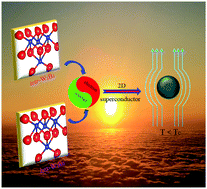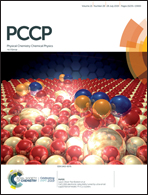Novel structures of two-dimensional tungsten boride and their superconductivity
Abstract
Two-dimensional (2D) superconductors, which can be widely applied in optoelectronic and microelectronic devices, have gained renewed attention in recent years. Based on the crystal structure prediction method and first-principles calculations, we obtain four novel 2D tungsten boride structures of tetr-, hex-, and tri-W2B2 and hex-WB4 and investigate their bonding types, electronic properties, phonon dispersions and electron–phonon coupling (EPC). The results show that both tetr- and hex-W2B2 are intrinsic phonon-mediated superconductors with a superconducting transition temperature (Tc) of 7.8 and 1.5 K, respectively, while tri-W2B2 and hex-WB4 are normal metals. We demonstrate that carrier doping as well as biaxial strain can soften the low-frequency phonon modes and enhance the strength of the EPC. While the Tc of tetr-W2B2 can be increased to 15.4 K under a compressive strain of −2%, the Tc of hex-W2B2 can be enhanced to 5.9 K by a tensile strain of +4%. With the inclusion of spin–orbit couping (SOC), the value of Tc decreases by 38.5% in our systems. Furthermore, we explore the stabilities and mechanical properties of tetr- and hex-W2B2 and indicate that they may be prepared by growing on ZnS(100) and ZnS(111), respectively. Our findings provide novel 2D superconducting materials and will stimulate more efforts in this filed.

- This article is part of the themed collection: 2019 PCCP HOT Articles


 Please wait while we load your content...
Please wait while we load your content...